Connection Between The Trafficking Of Jonah Rief, Kamala Harris, CPS And NCMEC Exposed!
The connection is obvious, within this investigation of Jonah Rief a cover -up of sexual abuse and trafficking of children was determined.
JONAH RIEF; CHILD TRAFFICKING; SATANIC ABUSE
…Jonah Rief in the USA in 2012. In 2013, Jonah entered Australia under a fake passport. “After Jonah was trafficked, nude photos of the boy went up on a Facebook page belonging to Sara Francis. Close to 200,000 hits on the page has indicated to human trafficking experts that the pictures were used as part of a sales operation.” Saving Jonah Rief.
In the USA, corrupt judges reportedly take children away from their mothers and hand these children over to child abuse rings and Satanist gangs.
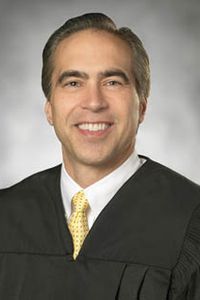
Jonah Rief is the son of Tammy Rief.
In California, Judge Gregory W. Pollack ordered that Jonah be handed over to Brian Sullivan.
Reportedly Brian Sullivan is a man with many aliases.
Reportedly, Brian Sullivan has at times claimed to be the father of Jonah, but reportedly he is not actually the father of Jonah.
Records reportedly show that Brian Sullivan evaded an Alabama order calling for a DNA test.
Reportedly, in 2013, Jonah was trafficked to Australia.

Reportedly, nude and body part photographs of Jonah were seen later in 2013 on a Facebook site under the names of Sara Francis and Sara Frances.
“Jonah is six years old and reportedly has information the traffickers fear will be released if Jonah surfaces.
“Other children have reportedly been trafficked by the same network and a recent report indicates Jonah may have witnessed some kind of murder tied to the traffickers.”
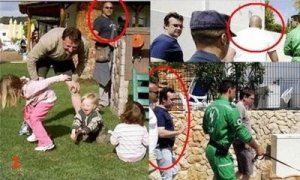
Very often it is the police who are involved in the kidnappings of children, reportedly.
Jonah’s parents have called on California Attorney General Kamala Harris and Governor Jerry Brown to take action to end the trafficking of children via the California court system.
stolenintoterror.blogspot / thepeoplesvoice / beforeitsnews.

Tammy Rief with Jonah Rief.
“Tammy Rief, who is from Georgia and has never lived in California, now sits in a California prison.”
Reportedly, an Alabama court ordered Brian Sullivan to keep away from Jonah, and another court order gave Tammy, the mother, full custody of Jonah.
However, a California judge gave Sullivan, “a man documented to have abused Jonah”, the right “to steal Jonah”, from his home in Georgia.
Child slavery and US courts– July 2014.
“Tammy had briefly dated Brian Sullivan, in South Carolina, but had not heard from him in over three years before he suddenly attempted to achieve custody of Jonah in her state of residence, Georgia.
“Tammy proved to the Georgia court that Brian Sullivan could not be the biological father and that Jonah was at risk from Sullivan.
“Hence the judge issued the two restraining orders establishing full custody to Tammy and preventing Sullivan from going anywhere near Jonah.
“Undaunted, Sullivan somehow got a California divorce court judge to award him custody of Jonah.
Reportedly, Tammy Rief has never been married.
Brian Sullivan then went to San Diego’s judge Gregory W. Pollack who arranged for California Marshals to bring Jonah from Georgia into his California jurisdiction and control.
When the mother was allowed a visit from Jonah, the mother “saw Jonah had been battered and had rope burns on both wrists and on his ankles.”
Jonah told his mother that his father had abused him along with several other men.
Tammy Rief took Jonah to the nearest out-of-state hospital.
An examination showed Jonah had been physically and sexually abused.
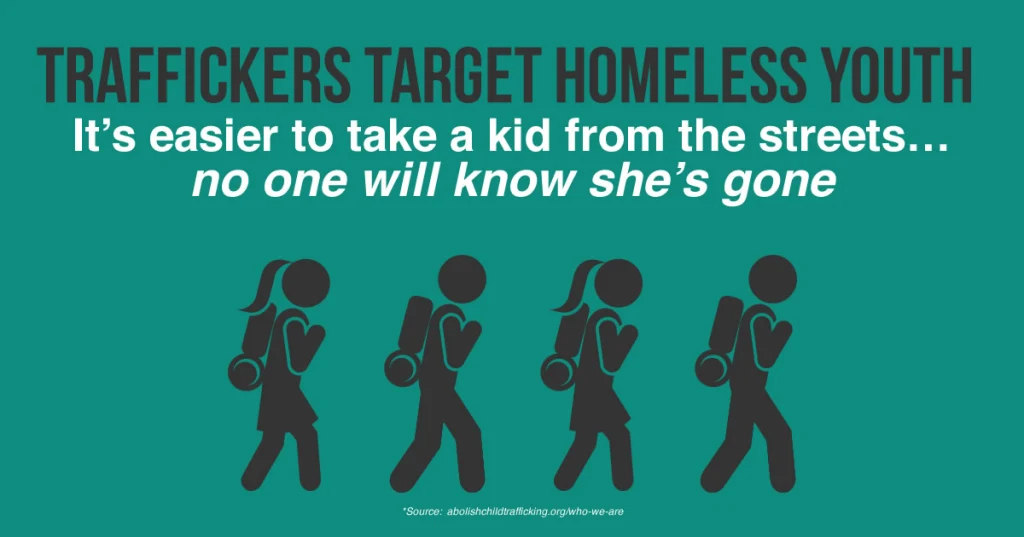
However, the Arizona police arrested Tammy and Jonah and sent them back to Sullivan and Judge Pollack.
Judge Pollack charged Tammy with kidnapping Jonah and gave her a three-year prison sentence.
Safe Kids international has compiled a list of the alleged illegalities that took place during the trial phase.
Similar stories of court ordered kidnapping have been reported in Detroit, MI, Florida and Oklahoma
Child slavery and US courts– July 2014.
Reportedly, Brian Sullivan has repeatedly admitted that Jonah is not his son.

Allegedly Brian Sullivan took Jonah to a club.
At the club, Jonah, and other young boys, were reportedly subjected to Satanic rituals.
Reportedly, Sullivan put on a hooded brown robe and was joined by men in hooded black robes.
“The boys were taken into the back room, where they were hung by ropes tried around their ankles.
“Candles were lit for the ritual.
“Tools were shoved up their anuses and the boys were forced to drink blood according to Jonah.
“Jonah said he was beaten for saying he did not like being with Sullivan.”
“There was witness testimony to the the rope burns present on the ankles, after these rituals.”

Lexi Dillon
“American kids are being sex trafficked out of the United States to rich buyers in foreign lands.
“This is a multi-billion dollar business and those leaders charged with protecting our children have failed to do their jobs.
“Shockingly, American judges routinely open the doors to trafficking of the youngest most innocent American children.
Paedophile Global Cabal
Sir Michael Havers, the late brother of Baroness Butler-Sloss, was accused of a “white-wash” after he backed a decision not to prosecute Sir Peter Hayman.
The brother of the judge in charge of the Government’s inquiry into allegations of an establishment paedophile ring refused to prosecute a paedophile diplomat caught exchanging obscene material.


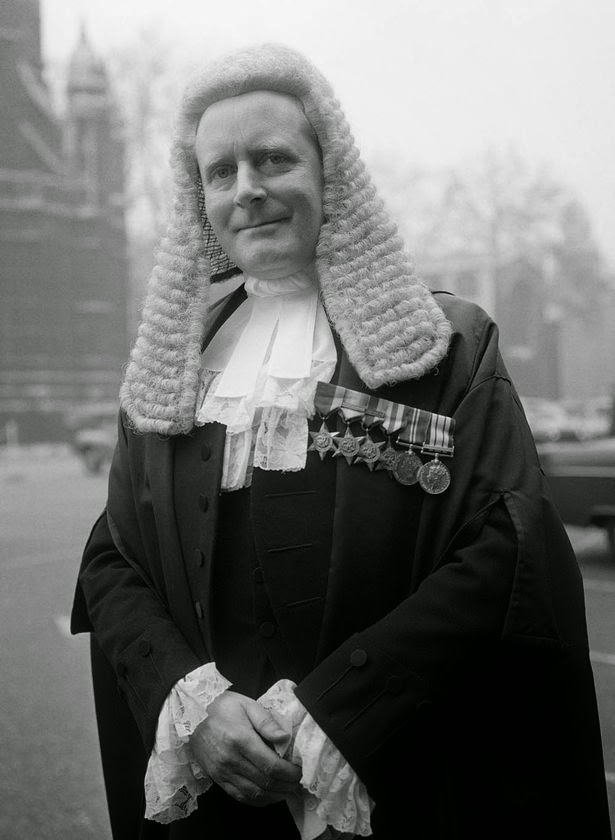
“In the case of Lexi Dillon, the Tustin Police could not stop a corrupt Orange County Judge James L. Waltz and his successor from handing her over to a man experts insisted had repeatedly sodomized and raped the girl.
“The evidence of sodomy and rape was clear and supported by medical evidence, by doctors records, by psychological reports and by the police investigation.”
He was appointed by former governor Arnold Schwarzenegger on May 16, 2008 to succeed Jonathan Cannon. No pic available of James found
Career
- 2008-Present: Judge, Superior Court of Orange County
- 2002-2008: Commissioner, Superior Court of Orange County
- 1988-2002: Sole practitioner
- 1984-1988: Associate, Morris, Polich and Purdy
- 1983-1984: Special attorney, U.S. Department of Justice
- 1980-1983: Judge Advocate General officer, U.S. Army
Child Protective Services Violate Public Trust
Italian priests join the war on Satanic crime – Telegraph. – Jan 2007
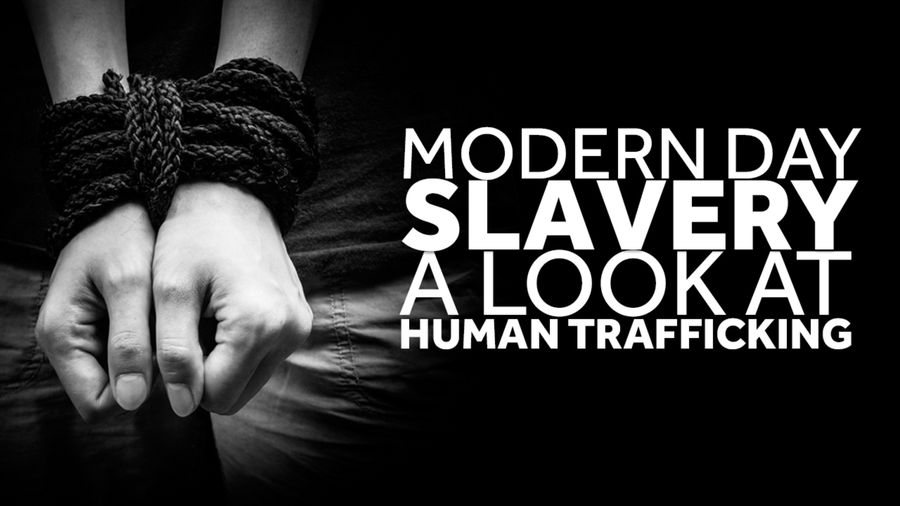
“Priests are to work alongside Italian police officers to tackle a rising tide of crimes linked to devil worship.
“The clerics have been seconded to the Squadra Anti Sette (SAS) anti-sect squad by the Vatican after Church officials became concerned about the number of churches being desecrated by Satanists.
“In recent months there have also been a string of murders that have been linked to devil worship.
“‘We are not just talking about murders but the psychological grip that these sects have on young people, especially taking them away from traditional social values and exposing them to all sorts of horrors.
“‘We estimate that there are at least 8,000 Satanic sects across the country with more than 600,000 members and the numbers are growing. That is why the Church is more than happy to help.'”
The nationwide operation will be centrally controlled from Rome by police chief Gianni de Gennaro. SAS units are expected to work with psychologists and the Vatican’s experts, while a special freephone hotline has been set up to report occult activities.
At the Arthur G. Dozier School in Marianna, Florida, there was a ‘Rape dungeon’ and students were hunted down and killed as they tried to escape.
A report details a century of horrific abuse at the notorious Florida reform school.
University of South Florida researchers have found the remains of 51 people buried at the reform school which was in operation between 1900 and 2011.
A 6-year-old boy ended up dead after being sent to work as a house boy, and another boy was found shot to death after an escape attempt.
Former inmates and employees talked about a ‘rape dungeon’ where boys, some younger than 12, were sexually assaulted
Some ex-Dozier inmates call themselves ‘The White House Boys’ after the white building where the worst abuse happened
Report details a century of abuse at Arthur G. Dozier School
PEOPLE v. RIEF
No. D065992.
THE PEOPLE, Plaintiff and Respondent, v. TAMMY CHERIE RIEF, Defendant and Appellant.
Court of Appeals of California, Fourth District, Division One.
Filed December 15, 2015.
Attorney(s) appearing for the Case
Raymond Mark DeGuiseppe , under appointment by the Court of Appeal, for Defendant and Appellant.

Kamala D. Harris , Attorney General, Gerald A. Engler , Chief Assistant Attorney General, Julie L. Garland , Assistant Attorney General, Eric A. Swenson , Lynne G. McGinnis and Kristin A. Guiterrez , Deputy Attorneys General, for Plaintiff and Respondent.

NOT TO BE PUBLISHED IN OFFICIAL REPORTS
California Rules of Court, rule 8.1115(a), prohibits courts and parties from citing or relying on opinions not certified for publication or ordered published, except as specified by rule 8.1115(b). This opinion has not been certified for publication or ordered published for purposes of rule 8.1115.
NARES, Acting P. J.
This case involves Tammy Cherie Rief’s 2012 abduction of J., who is her and Brian S.’s now-eight-year-old son. A jury found Rief guilty of one count of malicious child abduction in violation of Penal Code1 section 278.5, subd. (a) (section 278.5(a)). The court sentenced her to the upper term of three years in county jail (§ 1170, subd. (h)(2)).
Rief appeals, contending her conviction must be reversed because (1) the judgment is based upon an unconstitutional application of section 278.5(a) that effectively compelled a finding against her on the crucial and sole issue of “malice,” thereby relieving the prosecution of its ultimate burden of proof and depriving her of any meaningful opportunity for a defense; (2) the court prejudicially erred by denying her request that the jury be instructed on the common law defense of necessity; (3) section 278.7, which provides what the parties refer to as a statutory “good cause defense” to the crime of malicious child abduction (§ 278.5(a)), is unconstitutional both facially and as applied to her; and (4) the cumulative effect of the foregoing claimed trial errors violated her fundamental due process right to a fair trial. We reject these contentions and affirm the judgment.
FACTUAL BACKGROUND
A. The People’s Case
In late 2006 and again in early 2007, Rief and Brian S. dated while they were living in San Diego County. About a month after the relationship ended, Brian S. learned that Rief was pregnant. Brian S. tried to stay in touch with Rief during her pregnancy, but he lost contact with her because she did not respond to his telephone calls and text messages.
In December 2007 Rief’s father called Brian S. and informed him that Rief was in labor. Brian S. went to the hospital and was present during the birth of their son, J. Brian S. spent the next few days with J. and then left California on a preplanned trip for about a week and a half. When he returned, he saw J. almost every day. However, within a month, Rief began to keep Brian S. from J. by making excuses as to why Brian S. could not see their son. At one point Rief left on a two-week trip without telling Brian S. and she did not respond to his phone calls.
In November 2008 Rief informed Brian S. she was taking J. out of the state for the holidays. Concerned that Rief might not return, Brian S. commenced a paternity action and informed her there was a restraining order that prevented her from taking J. out of the state without his consent. Brian S. testified he told Rief he would consent if she gave him some assurance she would return, and Rief agreed to sign a statement stating her intent to return. She told Brian S. her attorney would contact him to make the arrangements, but she then left before making any further contact with Brian S.
In February 2009 Rief commenced a paternity action in Alabama, where she was living with J. The Alabama court initially granted Rief temporary custody of J., but later relinquished jurisdiction to the California court where Brian S. had filed the first paternity case.
Between November 2008 and October 2009 Brian S. made repeated•attempts to contact Rief because he wanted to see J., but she did not respond to his messages. At one point, Rief’s attorney called Brian S. and told him Rief did not intend to return to California.
In October 2009 Brian S. obtained a custody order from a California family court providing him the right to immediate visitation with J. and regular visitation thereafter for the first week of each month. The order also allowed Brian S. to contact J. by telephone and Skype.
Despite the custody order, over the next several months Rief only permitted Brian S. to have J. on eight of the 25 scheduled days of visitation. Rief regularly failed to comply with the order for telephone and Skype calls.
On November 8, 2009, immediately after Brian S.’s first regular visit with J., Rief took J. to a hospital to report alleged abuse. J. had minor bruises on his face, right arm and left foot and a small laceration on his face. Brian S. testified that the wound to J”s cheek occurred when he fell onto a bush at his residence. Child Protective Services (CPS)2 investigated the alleged abuse and determined the accusations were unfounded.
In December 2009 Rief claimed J. was sick and did not permit Brian S. to see him.
In January 2010 Brian S. was required by Rief’s counsel and her father to sign a contract agreeing he would travel to Alabama to visit J., but not take J. out of the state, despite a custody order allowing him to take J. to California. After Brian S. traveled to Alabama, Rief kept him from seeing J. until the third day of the five-day visit.
In February 2010 Rief again prevented Brian S. from seeing J. Rief informed Brian S. that J. was unavailable for their visit because she had scheduled a medical procedure during Brian S.’s visitation time. The procedure was eventually postponed at the request of Brian S.’s attorney because Brian S. had not consented to it. Brian S. went to Alabama and tried to see J. for his scheduled visit, but when Brian S. spoke to Rief on the phone, she told him he was not welcome. When Brian S. went to the house where Rief was staying, she did not answer the door. While he was waiting in his car, Brian S. received a call from Rief’s father, who yelled at him.
Rief did not permit Brian S. to see J. until the end of March 2010 when she came to California for an appointment. Rief thereafter prevented Brian S. from seeing J. for the majority of his scheduled visits, including a six-month period when she did not permit him to see J. at all.
In November 2010 the California family court issued an order temporarily granting Brian S. sole physical custody of J. as a result of Rief’s failure to obey the earlier custody orders.
Rief was ordered to appear with J. before the Alabama court judge on December 2, 2010, in order to relinquish him to Brian S. Rief appeared, but she did not bring J. The Alabama court held Rief in contempt and ordered her jailed until she relinquished J. Two days later, Rief’s father brought J. to Brian S. and they returned to San Diego.
In January 2011 Rief returned to San Diego for custody hearings. A custody trial took place between January and June. Both parents sought sole physical custody of J.
In April 2011 Rief went to the San Diego County District Attorney’s Office and requested assistance in obtaining full custody of J. She met with District Attorney Investigator Carole Snyder, who reviewed paperwork that Rief provided concerning the custody proceedings. Snyder did not open a case because, at the time, Rief had no custodial rights and J. was not a missing child. Instead, Snyder advised Rief to retain an attorney and file an ex parte motion for custody of J. She then learned that a custody hearing was already scheduled. Rief did not make any allegations of abuse.
On June 20, 2011, Rief contacted the San Diego Police Department to report bruising and abrasions on J.
On June 23, 2011, the court issued a child custody order (custody order) granting Rief and Brian S. joint physical and legal custody of J. but gave Brian S. the “tie-breaking vote” when it came to legal decisions. The custody order provided that J.’s residence would be in Southern California for a period of five years and that Rief could not remove him from the area without Brian S.’s consent.
In March 2012 after Rief failed to bring J. to preschool according to the schedule set by the court, the court ordered her to comply. On March 13, 2012, the court ordered that J. attend a third day of preschool a week, after an additional day was recommended by his teacher and Reif resisted. The order gave Brian S. sole control over decisions related to therapy sessions for J. About a week later, Brian S. filed a motion for sole legal custody of J. A court hearing was set for July 2, 2012.
Sometime in mid-March, Rief contacted Mark Davis of the Alabama Family Rights Association. Rief sought Davis’s advice about how to move the custody proceedings from California to Alabama.
On April 2, 2012, Davis met with Rief and her father in Alabama and he reviewed paperwork she provided. Davis told Rief she should seek the advice of an attorney and recommended one. Davis met with her again later that month. During the meetings, Rief made vague allegations of abuse and stated she thought that Brian S. might take J. out of the country, but her primary concern appeared to be moving the custody proceedings to Alabama.
On Apri1 27, 2012, Rief picked J. up from his preschool. That was the last day he attended.
On April 30, 2012, Rief failed to bring J. to Brian S. at the agreed-upon time and location. He tried calling Rief, but her phone had been disconnected. When he was unable to find Rief at either address she had provided the court, Brian S. called the police. He was referred to the district attorney’s office, where he met with Investigator Snyder. Snyder attempted to locate Rief but was unsuccessful. Brian S. did not see J. for more than six months.
During this time Rief was living with J. in Charlotte, North Carolina, with Robin Evans and Gwendolyn Buckingham. Evans’s sister’s husband, D. Riley Bell, visited the home several times during the summer and got to know Rief—who went by the name “Julie” —and J.—who went by the name “Nicko.” Although J. seemed happy, he seldom went outside, and when he did, he usually covered himself with longsleeved shirts and pants, which was unusual given the hot weather. Also, sheets were used to cover the windows in the room where Rief and J. were staying to keep people from seeing in. Bell searched the Internet and found pictures of J. and Rief on the National Center for Missing and Exploited Children (NCMEC) website. After learning that Rief and J. were sought in connection with a missing child case, Bell told his wife they should not be helping Rief. He called NCMEC and turned them in. Bell later spoke to Investigator Synder and gave her the information he had. Bell’s wife and sister-in-law were very upset and thought he had violated “family trust.”
In early November 2012 Charlotte police officers responded to the home with a warrant for Rief’s arrest. Buckingham was hesitant to speak to the officers and at first denied Rief and J. were there. After she was warned she could be charged with harboring them if she was lying, she let the police inside and directed them upstairs. Officers found Rief hiding under a pile of clothes and holding J. She had changed her hair color from blonde to brown. Rief was arrested and one of the officers interviewed J. before he was placed into the custody of social services.
Brian S. flew to Charlotte the day after J. was found. Brian S. testified that J. looked disheveled, he was not clean, and he had long, oily hair that had some highlights in it. After Brian S. brought J. back to San Diego, J. seemed scared and quiet, and he exhibited unusual behaviors, such as avoiding windows and ducking down when cars passed by the house. After several weeks of being in Brian S.’s care, J. returned to his normal, happy self.
About two weeks after Brian S. and J. returned to San Diego, Snyder and CPS worker Lupita Castro interviewed them concerning allegations J. was sexually abused while in Brian S.’s care. The allegations were subsequently deemed unfounded. During the interview, J. was very outgoing and happy, and he appeared to have a loving relationship with Brian S.
Brian S. testified he never abused J. Acknowledging that J. sometimes got bruises or scratches while in his care, Brian S. testified he often noticed bruises and scratches on J. after he was with Rief.
Melissa Reed, the director of the preschool in Carlsbad that J. attended between April 2011 and April 2012, testified that during that period of time she never noticed any signs that J. was being abused and J.’s teacher never reported to her that he was being physically abused. Reed testified she noticed J. tended to be a little withdrawn, fearful and not very open to interaction on the days when Rief dropped him off, and he seemed happier and more interactive and outgoing after he was in Brian S.’s care.
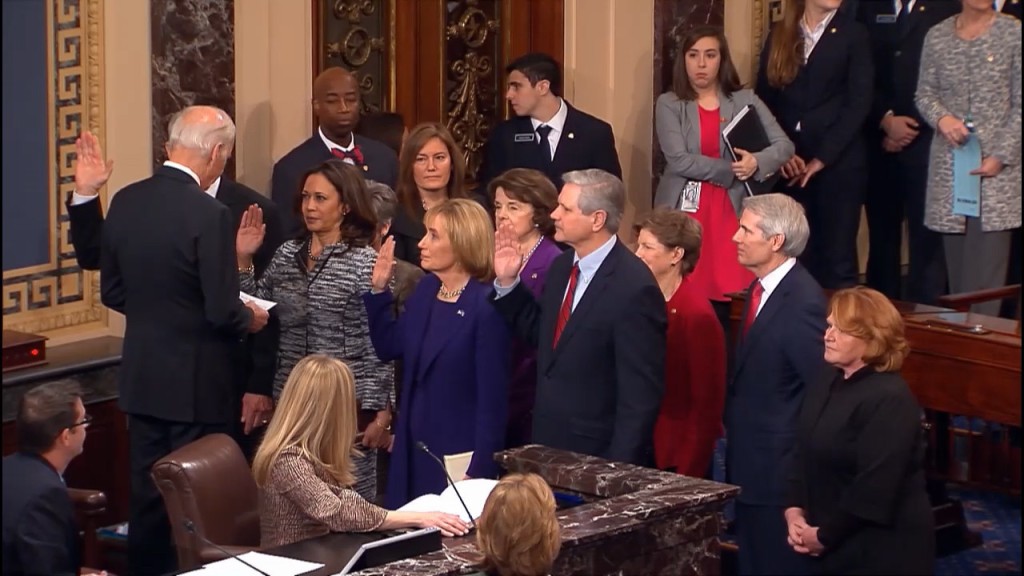
B. The Defense
Rief did not testify. The first defense witness was Penelope Nagel, who testified that she and Rief became close friends in around December 2010. Nagel spent the most time with Rief between the end of 2011 and the beginning of 2012. During this period, as J. was spending more time with Brian S., J.’s behavior started changing and he became “much more hostile” to the point Nagel felt she could not trust him because he was hitting and scratching her son. These problems continued to worsen up to the time Rief left with J. in April 2012. Nagel had also noticed suspicious bruising on J. beginning in the summer of 2011. She testified one was large, “very odd,” and appeared to be some sort of puncture wound on J.’s back. Another across his back was “like a stripe.” Nagel never had any reason to suspect that Rief inflicted those injuries.
Nagel also testified that sometime between August and late October 2011, J. complained about pain in his “butt.” Rief and Nagel looked and noticed redness around J.’s anus. J. pointed to his buttocks and said “Poppa Pete” had “hurt” him and had put a screwdriver in his “butt.” Nagel testified she did not know who “Poppa Pete” was. At some point while in Nagel’s presence, Rief had made phone calls to agencies that assist in child custody cases. Nagel accompanied Rief to a meeting with a CPS worker in February 2012 about the situation, although neither of them raised sexual abuse allegations. Nagel then began spending less time with Rief and J. She testified she had a hard time being around them because she felt powerless to help with the situation. Nagel also testified she was supportive of Rief, but she would not commit perjury for her.
Marnie Cheney had known Rief for many years and they were friends. Around the end of 2009, Rief began expressing concerns to her about J.’s well-being, saying he was sick more often and would come home with bruises on his body after being with Brian S. Cheney noticed such bruises on J.’s arms and legs on four or five occasions between then and November 2011. (7RT 582-584, 585:2-4, 593:22-28)! Cheney also noticed J.’s behavior became more aggressive. Sometime in late 2010 or early 2011, Cheney was with Rief and Nagel when J. said that someone had put something up his “butt,” and they noticed red marks on his buttocks. Cheney was also aware of times during this period when Brian S. refused to let Rief take J. to the doctor even though J. was ill.
Jessica Salazar, a CPS worker, interviewed Brian S. concerning allegations of physical abuse but determined the allegations were unsubstantiated. Brian S. said he had disciplined J. by placing him in a five-minute “time-out,” grabbing his ear when he wouldn’t listen, and slapping him on the bottom. She checked J.’s body and he did not have any suspicious marks or bruises. Although he had bruises on his shins, they were typical for a child of J.’s age.
C. The People’s Rebuttal
Regina Misch, Rief’s best friend, testified that when she saw Rief and J. on three occasions between the end of 2010 and April 2012, she did not notice any unusual marks, bruises, or anything else that led her to suspect J. was being abused or neglected. Misch acknowledged, however, that she made two reports to CPS based on concerns Rief expressed to her. One of the times Misch contacted CPS was after J. was discovered in Charlotte and returned to Brian S.
In November 2012 CPS worker Lupita Castro conducted an investigation into allegations Brian S. had sexually abused J. prior to March 2012. During her investigation she separately interviewed Brian S. and J. During J.’s interview, he complained about his “butt hurting” but it did not appear to be related to sexual abuse. At Castro’s recommendation, Brian S. had J. examined by a doctor. Based on the interviews and a report from the doctor, Castro found no evidence of sexual abuse and the allegations were deemed unfounded. CPS had previously received referrals for alleged abuse of J.
Castro also testified that on November 20, 2009, allegations of physical and emotional abuse were made against Brian S. The case was “evaluated out” because it was already being investigated by another agency. On May 17, 2011, allegations of physical abuse and neglect were made against Brian S., which were deemed unfounded. On December 14, 2011, allegations of neglect were made against both parents, and they were later deemed unfounded.
Brian S.’s girlfriend, Denise G., testified she had spent a lot of time around Brian S. and J. over the years. J. received bruises typical for a child of his age when he was in both parents care. She had never seen Brian S. abuse J. and had never heard J. complain about anyone putting something in his bottom.
DISCUSSION
I. CLAIM OF INSTRUCTIONAL ERROR (CALCRIM No. 1251) AND RELATED CLAIM THAT SECTION 278.5(a) WAS UNCONSTITUTIONALLY APPLIED
Rief claims her conviction of malicious child abduction must be reversed because it is “based upon an unconstitutional application of section 278.5[(a)], which effectively compelled a finding against [her] on the crucial and sole issue of `malice,’ thereby relieving the prosecution of its ultimate burden of proof and depriving [her] of any meaningful opportunity for a defense.” In support of this claim, she contends the court’s instruction on this crime under CALCRIM No. 1251 lowered the prosecution’s burden of proof because it effectively compelled a finding of “malice” that was based solely on her act of taking a child (J.) in violation of a court order (the June 23, 2011 custody order) “regardless of any justification, excuse, or mitigating circumstances behind her actions.” We reject Rief’s claims because CALCRIM No. 1251 correctly instructed the jury on the elements of malicious child abduction and the definition of malice, that instruction did not lessen the prosecution’s burden of proof, and, thus, section 278.5(a) was not unconstitutionally applied to her.
A. Applicable Legal Principles
“The trial court is obligated to instruct the jury on all general principles of law relevant to the issues raised by the evidence, whether or not the defendant makes a formal request.” (People v. Blair (2005) 36 Cal.4th 686, 744.) “`”The general principles of law governing the case are those principles closely and openly connected with the facts before the court, and . . . necessary for the jury’s understanding.”‘” (People v. Breverman (1998) 19 Cal.4th 142, 154.)
We generally review de novo a claim of instructional error. (People v. Posey (2004) 32 Cal.4th 193, 218.) “In assessing a claim of instructional error, we examine the instructions as a whole. The test we apply is whether there is a reasonable likelihood the jurors would have understood the instructions in a manner that violated a defendant’s rights.” (People v. Hajek and Vo (2014) 58 Cal.4th 1144, 1246.)
B. Analysis
Rief was convicted of a violation of section 278.5(a), which defines the crime of malicious child abduction and expressly applies to “[e]very person who takes, entices away, keeps, withholds, or conceals a child and maliciously deprives a lawful custodian of a right to custody.”3 (Italics added.)
The court instructed the jury under CALCRIM No. 1251 on the three elements of malicious child abduction as follows:
The defendant is charged in Count One with depriving someone else of the right to custody in violation of Penal Code section 278.5.
To prove that the defendant is guilty of this crime, the People must prove that:
- The defendant took, enticed away, kept, withheld, or concealed a child;
- The child was under the age of 18;
AND - When the defendant acted, she maliciously deprived a lawful custodian of his right to custody. (Italics added.)
At issue here is the third element, which required the prosecution to prove beyond a reasonable doubt that “[w]hen the defendant acted, she maliciously deprived a lawful custodian of his right to custody.” (CALCRIM No. 1251.) Rief does not challenge the correctness of the foregoing statement in CALCRIM No. 1251 of the third element of the crime of malicious child abduction. Instead, she challenges the definition of the term “maliciously” provided by that instruction. The standard version of CALCRIM No. 1251, which the court gave to the jury in this case, defines the term “maliciously” as follows:
Someone acts maliciously when he or she intentionally does a wrongful act or when he or she acts with the unlawful intent to disturb, defraud, annoy, or injure someone else. (Second italics added.)
Under this definition, the prosecution can establish the malice element of the crime of malicious child abduction by proving beyond a reasonable doubt that the defendant “intentionally” did the alleged wrongful act. (CALCRIM No. 1251.)
Rief’s claims are premised on her assertion that the definition of “maliciously” in CALCRIM No. 1251 is “incomplete.” Specifically she contends the court was required to add language to the definition of the term “maliciously” in CALCRIM No. 1251 to require the prosecution to prove not only that the defendant intentionally did the alleged wrongful act, but also that she did so without justification, excuse, or mitigating circumstances. Thus, Rief asserts, the definition of “maliciously” in CALCRIM No. 1251 is not “[c]orrect and complete . . . unless the intentional doing of the wrongful act was without justification, excuse, or mitigating circumstances.”
Rief further asserts that as a result of the incomplete definition of “maliciously” in CALCRIM No. 1251, “the mere act of taking the child in violation of a custody order will necessarily constitute `malice’ regardless of the existence of any justification, excuse, or mitigating circumstances that may exist.” Thus, she maintains, the prosecution’s burden of proof is “reduced from three elements to two.”
Rief’s claims and assertions are unavailing. CALCRIM No. 1251 correctly defines malice by virtually mirroring the language of section 7, subdivision (4), which provides that “[t]he words malice' andmaliciously’ import a wish to vex, annoy, or injure another person, or an intent to do a wrongful act, established either by proof or presumption of law.” (Italics added.) The California Supreme Court has recognized that the definition of malice set forth in section 7, subdivision (4), applies to section 278.5(a). (People v. Neidinger (2006) 40 Cal.4th 67, 79.)
Contrary to Rief’s claim, CALCRIM No. 1251 did not permit the jury to convict her of count 1 based solely upon her commission of the “wrongful act” of depriving Brian S. of his right to custody by taking and concealing J. in violation of the custody order.4 As pertinent here, the instruction required the prosecution to prove beyond a reasonable doubt that Rief acted maliciously when she deprived Brian S. of his right to custody by intentionally doing the wrongful act charged in count 1. Thus, the prosecution had to prove not only that Rief committed the charged wrongful act, but also that she did so intentionally. Because the prosecution was required to prove the element of malice by proving Rief intentionally violated the custody order, Rief’s claim that the definition of malice in CALCRIM No. 1251 reduced the prosecution’s burden of proof “from three elements to two” is without merit.
Rief contends the decision in People v. Diaz (2005) 125 Cal.App.4th 1484 supports her claim that the court’s malice instruction under CALCRIM No. 1251 was flawed because it permitted the jury to find her guilty based solely on the act of taking J. in violation of a custody order. Her reliance on Diaz is misplaced. In that case the Court of Appeal found the jury was erroneously instructed that the failure to yield the right of way for an emergency vehicle could serve as one of three requisite predicate offenses to establish the “willful or wanton disregard for safety” element of evasion in violation of Vehicle Code section 2800.2. (Diaz, at pp. 1490-1491.) The Diaz court reasoned it was impossible to evade a pursuing police vehicle in violation of Vehicle Code section 2800.2 without also failing to yield to it in violation of Vehicle Code section 21806, making it a lesser included offense and reducing the number of violations the People had to prove from three to two. (Id. at p. 1491.) Diaz is inapposite because it involved a completely different statute that required the prosecution to specifically prove three different predicate offenses to establish an element of the charged offense.
We reject Rief’s contention that CALCRIM No. 1251 “effectively created an unconstitutionally impermissible” presumption of malice based upon the “undisputed” facts that she took a child under 18 years of age in violation of a court order. The court’s instructions under CALCRIM No. 1251 did not require the jury to find or presume that Rief acted with malice in the event the jury found she violated the custody order when she took J. The instructions did not tell the jury it must presume anything and did not refer to the custody orders. Although the jury could find from the evidence that taking J. out of California violated the custody order, and that violating the custody order was a “wrongful act,” these findings of fact alone were insufficient to compel a conviction under the court’s instructions. For reasons already discussed, the prosecution was still required to prove that Rief intentionally did this wrongful act. In other words, she had to know what she was doing was wrong and purposely did it anyway. Thus, the jury could have acquitted Rief had it found the prosecution failed to meet its burden of proving beyond a reasonable doubt that she intentionally violated the custody order. This could have occurred if, for example, there was insufficient proof she knew about the custody order or if the custody order was ambiguous as to whether she could take Jonah out of the state. We conclude the instructions did not create a mandatory presumption requiring the jury to find Rief acted with malice if it found she violated a custody order by taking J.
For all of the foregoing reasons, we reject Rief’s claims of instructional and constitutional error.
II. CLAIM OF INSTRUCTIONAL ERROR (FAILURE TO INSTRUCT ON THE DEFENSE OF NECESSITY)
Rief also contends the court prejudicially erred by denying her request that the court instruct the jury on the common law affirmative defense of necessity. Specifically, she contends the court was required to give a necessity instruction in this case based on evidence showing that she took J. to Charlotte, North Carolina, because she had a good faith, objectively reasonable belief she needed to keep him away from Brian S. to protect J. from “ongoing physical and emotional abuse, neglect, and perhaps even sexual abuse”; and that there was no adequate alternative “that would or could have achieved the objective of keeping J. away from [Brian S.].” was abusing him. We conclude the court properly refused to give the requested necessity defense instruction because the evidence was insufficient to support all of the elements of the defense.
A. Background
Before trial, the prosecution filed a brief asserting Rief should not be permitted to present a necessity defense because she “[could] not prove she had no reasonable alternative to committing the charged offense.”
Rief thereafter filed an in limine motion seeking admission of evidence of her belief that J. would be “exposed to significant bodily and/or emotional harm” if he were placed back in Brian S.’s care. She argued such evidence would support her claim of legal necessity.
In its opposition to Rief’s motion, the prosecution argued Rief should not be allowed to present a necessity defense and sought to exclude all evidence of alleged abuse or neglect prior to the issuance of the family court’s June 23, 2011 custody order, as well as opinion testimony that she had a good faith and reasonable belief of possible harm to J.
During a hearing on the motions in limine, defense counsel indicated the defense was seeking an instruction on necessity. The prosecutor argued that because the defense would not be able to prove that any abuse actually occurred, there was not enough evidence Rief took the child to prevent a significant and imminent evil. The prosecutor noted reasonable legal alternatives were available to Rief, such as reporting the abuse to the police or CPS, or asking for a modification of the custody order or for a restraining order. The prosecutor indicated that she did not think Rief acted with the requisite good faith and objectively reasonable belief, and that it was arguable Rief created a greater danger by subjecting J. to emotional harm and instability when she took him away from his father and was “on the run.”
Defense counsel replied that the prosecutor’s arguments for the jury, and Rief deserved to “put on the defense in her case.” In response to inquiries by the court, defense counsel set forth the evidence she believed would show Rief took the action to avoid a significant and imminent evil and that Rief exhausted all reasonable alternatives. Indicating there might be sufficient evidence to allow Rief to present a necessity defense, the court deferred its ruling.
At another pretrial hearing, the court questioned whether there was enough evidence of two elements of the necessity defense (lack of an adequate legal alternative and the existence of an actual emergency) to support giving CALCRIM No. 3403, the standard instruction on that defense. The court expressed its opinion it would be hard for the defense to meet its burden. It continued to defer its ruling.
At trial, following the prosecution’s case in chief and during the defense case, defense counsel stated she did not know whether Rief would testify, and she indicated she was unsure whether the defense wanted a necessity defense instruction.
The next day, the prosecutor indicated she was seeking an instruction on the statutory “good cause defense” and defense counsel indicated she wanted a necessity defense instruction. The court initially indicated it would give both instructions. However, after discussion about the burden of proof required, the court questioned defense counsel about the evidence that there were no adequate legal alternatives. Defense counsel indicated she would rather not confuse the jury by giving instructions on the two defenses. The court deferred its ruling until all of the evidence was presented.
After the last witness testified, the court ruled it was not going to give an instruction on either the statutory good cause defense or the necessity defense because there was insufficient evidence to support those instructions.
B. Applicable Legal Principles
A trial court has a duty to instruct on a particular defense “` only if it appears that the defendant is relying on such a defense, or if there is substantial evidence supportive of such a defense and the defense is not inconsistent with the defendant’s theory of the case.'” (People v. Barton (1995) 12 Cal.4th 186, 195.) “Although a trial court should not measure the substantiality of the evidence by undertaking to weigh the credibility of the witnesses, the court need not give the requested instruction where the supporting evidence is minimal and insubstantial.” (People v. Barnett (1998) 17 Cal.4th 1044, 1145, fn. omitted.)
A necessity defense is recognized in California. (In re Eichorn (1998) 69 Cal.App.4th 382, 388). However, its scope “is very limited and depends on the lack of a legal alternative to committing the crime. It excuses criminal conduct [only] if it is justified by a need to avoid an imminent peril and there is no time to resort to the legal authorities or such resort would be futile.” (People v. Beach (1987) 194 Cal.App.3d 955, 971, italics added, superseded by statute on another point as stated in People v. Neidinger, supra, 40 Cal.4th at pp. 76-77.)
“To justify an instruction on the defense of necessity, a defendant must present evidence sufficient to establish that [he] violated the law (1) to prevent a significant and imminent evil, (2) with no reasonable legal alternative, (3) without creating a greater danger than the one avoided, (4) with a good faith belief that the criminal act was necessary to prevent the greater harm, (5) with such belief being objectively reasonable, and (6) under circumstances in which [he] did not substantially contribute to the emergency.” (People v. Kearns (1997) 55 Cal.App.4th 1128, 1135 (Kearns), italics added.)
An instruction on the defense of necessity is only required when the defendant meets her burden of proving there is substantial evidence from which a reasonable jury could find each element of the defense. (People v. Verlinde (2002) 100 Cal.App.4th 1146, 1165 (Verlinde); Kearns, supra, 55 Cal.App.4th at p. 1135.) Thus, if the evidence is insufficient with respect to any one of the elements of the necessity defense, the trial court may properly refuse to instruct the jury on that defense. (Ibid.)
C. Analysis
The court did not err in refusing to give the necessity defense instruction requested by the defense because the evidence was insufficient to permit a reasonable jury to find that all of the elements of that defense were satisfied. As already discussed, the second element of the necessity defense requires proof that when the defendant committed the charged offense, there was “no reasonable legal alternative.” (Kearns, supra, 55 Cal.App.4th at p. 1135.) Thus, Rief had the burden of presenting substantial evidence that she had no reasonable legal alternative to violating the custody order by taking J. to Charlotte without Brian S.’s consent.
Rief failed to meet her burden. The Attorney General argues that “[i]f [Rief] truly believed Brian S. was abusing J., and that J. was in imminent danger, she had a number of legal alternatives available. She could have returned to the family court to seek emergency sole custody or have the custody order modified, she could have sought a temporary restraining order, she could have called CPS or the police to make a report of child abuse, or she could have made a good cause report to the San Diego County District Attorney’s office.” There is no substantial evidence from which a reasonable jury could find that none of these legal alternatives to abducting J. was adequate or reasonable. Because Rief failed to meet her burden with respect to the second element of the necessity defense, she has not shown, and cannot demonstrate, that the court erred in refusing to instruct the jury on the necessity defense. (See Verlinde, supra, 100 Cal.App.4th at p. 1165; Kearns, supra, 55 Cal.App.4th at p. 1135.)
III. CLAIM THAT THE SECTION 278.7″ GOOD CAUSE” DEFENSE IS UNCONSTITUTIONAL ON ITS FACE AND AS APPLIED
Rief next contends that section 278.7, which provides a statutory “good cause” defense to the crime of malicious child abduction (§ 278.5(a)) (the offense of which she was convicted in this case), is unconstitutional both facially and as applied to her.
Acknowledging Rief’s contention “involves undisputed facts and a pure question of law,” the Attorney General first asserts Rief forfeited this contention “by not raising a constitutional challenge to section 278.7 in the trial court,” but then argues her contention should be rejected if this court chooses to reach its merits.
We will consider Rief’s constitutional challenge to section 278.7 on the merits. (See People v. Hines (1997) 15 Cal.4th 997, 1061 [appellate courts may consider a challenge to the constitutionality of a statute on the merits, even if it was not raised in the trial court, if the challenge involves “`a pure question of law which is presented by undisputed facts'”].) We conclude section 278.7 is constitutional both facially and as applied to Rief.

A. Statutory Scheme (§ 278.7)
Section 278.7, subdivision (a) (section 278.7(a)), provides:
Section 278.5 does not apply to a person with a right to custody of a child who, with a good faith and reasonable belief that the child, if left with the other person, will suffer immediate bodily injury or emotional harm, takes, entices away, keeps, withholds, or conceals that child. (Italics added.)
To be entitled to the section 278.7 “good cause” defense, the defendant must have complied with certain statutory requirements set forth that section. (See People v. Mehaisin (2002) 101 Cal.App.4th 958, 965 [trial court properly found that defendant who failed to comply with section 278.7 reporting requirements was not entitled to the section 278.7 defense].) As pertinent here, section 278.7 provides in subdivision (c):
(c) The person who takes, entices away, keeps, withholds, or conceals a child shall do all of the following:
(1) Within a reasonable time from the taking, enticing away, keeping, withholding, or concealing, make a report to the office of the district attorney of the county where the child resided before the action. The report shall include the name of the person, the current address and telephone number of the child and the person, and the reasons the child was taken, enticed away, kept, withheld, or concealed.
(2) Within a reasonable time from the taking, enticing away, keeping, withholding, or concealing, commence a custody proceeding in a court of competent jurisdiction consistent with the federal Parental Kidnapping Prevention Act (Section 1738A, Title 28, United States Code) or the Uniform Child Custody Jurisdiction Act (Part 3 (commencing with Section 3400) of Division 8 of the Family Code).
(3) Inform the district attorney’s office of any change of address or telephone number of the person and the child. (Italics added.)
Subdivision (d) of section 278.7 sets forth the relevant time frames for compliance with the subdivision (c) requirements:
For the purposes of this article, a reasonable time within which to make a report to the district attorney’s office is at least 10 days and a reasonable time to commence a custody proceeding is at least 30 days. This section shall not preclude a person from making a report to the district attorney’s office or commencing a custody proceeding earlier than those specified times.
B. Rief’s Facial Challenge to the Constitutional Validity of Section 278.7
Rief contends section 278.7 is unconstitutional on its face because it “cut[s] off any meaningful opportunity to defend against the crime of child abduction for the vast majority of defendants to whom it applies.” Specifically, while agreeing there should be a “good cause defense” for persons who meet what she refers to as the “technical reporting and custodial proceeding requirements” of section 278.7(a), she contends the statute is unconstitutional on its face because it “has the effect of unfairly and improperly cutting off any meaningful opportunity to mount a defense” on the “crucial” issue of malice “for all defendants who failed to comply with the specific parameters of the reporting and custody proceeding requirements [set forth in subdivisions (c) and (d) of section 278.7].” We reject this contention.
The principles that guide our analysis are well-established. “The courts will presume a statute is constitutional unless its unconstitutionality clearly, positively, and unmistakably appears; all presumptions and intendments favor its validity.” (People v. Falsetta (1999) 21 Cal.4th 903, 912-913.) “`”The burden of establishing the unconstitutionality of a statute rests on [the party] who assails it.”‘” (In re York (1995) 9 Cal.4th 1133, 1152.) Furthermore, when we evaluate a facial challenge to the constitutional validity of a statute, we consider the text of the statute itself, not its application to the particular circumstances of an individual. (Tobe v. City of Santa Ana (1995) 9 Cal.4th 1069, 1084.) A facial challenge to a statute is “the most difficult challenge to mount successfully, since the challenger must establish that no set of circumstances exists under which the [statute] would be valid.” (United States v. Salerno (1987) 481 U.S. 739, 745.)
Section 278.5(a), which defines the crime of malicious child abduction, was originally enacted “to encourage parents who are unhappy with custody or visitation provisions under existing conditions to return to the civil court to seek judicial clarification or modification of the order, and to discourage them from taking the law into their own hands by concealing the child in a place unknown to the other parent.” (People v. Lortz (1982) 137 Cal.App.3d 363, 368 (Lortz).)
While there may be some exceptional situations in which a parent must act in violation of another’s judicially sanctioned custody rights in order to protect his or her child from imminent harm, in order to fulfill the underlying purpose of section 278.5(a) the circumstances under which a parent may act outside the legal system to prevent such harm must be carefully limited. In enacting section 278.7, the Legislature balanced the legitimate competing governmental interests in protecting children from harm and discouraging parents from “taking the law into their own hands by concealing the child in a place unknown to the other parent.” (Lortz, supra, 137 Cal.App.3d at p. 368.) Specifically, section 278.7 balances these competing interests by allowing parents to take a child in violation of another’s right to custody if they have a “good faith and reasonable belief” in the need to do so in order to protect their children from “immediate bodily injury or emotional harm” (§ 278.7(a)), and they provide specified contact information to authorities and seek a legal change in custody status within a reasonable period of time (§ 278.7, subds. (c), (d)).
As noted, Rief contends section 278.7 is unconstitutional on its face because it prevents defendants who acted out of a good faith and reasonable belief in the need to protect their children, but failed to meet the requirements of subdivisions (c) and (d) of that section, from presenting a meaningful defense that they lacked malice. This contention is unavailing because section 278.7 does not prevent defendants who failed to comply with its reporting and custody proceeding requirements from presenting a defense that they did not act maliciously. For example, if the defendant is able to present evidence he or she acted with the intent to protect the child rather than with the intent to disturb, defraud, annoy, or injure someone else or with the intent to do a wrongful act, the defendant may argue the prosecution has not met its burden of proving malice. (See CALCRIM No. 1251.) In an appropriate case, the defendant may present a common law necessity defense. (See People v. Neidinger, supra, 40 Cal.4th at p. 78.) Thus, section 278.7 does not prevent defendants from presenting a meaningful defense to the crime of child abduction. On the contrary, it provides them with an additional statutory defense. We conclude section 278.7 is not unconstitutional on its face.
C. Rief’s As-Applied Challenge to the Constitutional Validity of Section 278.7
Rief also contends section 278.7 is “unconstitutional as applied here.” We reject this contention.
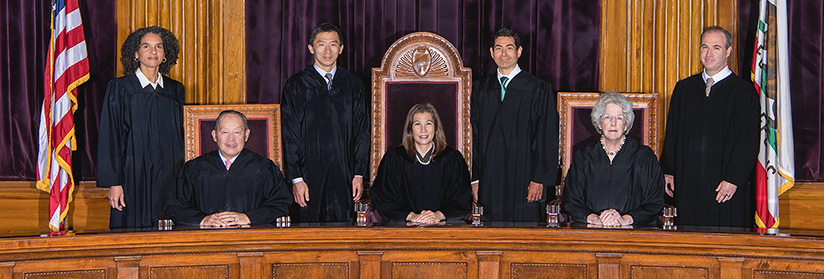
The California Supreme Court has explained that an as-applied challenge to the constitutional validity of a statute “contemplates analysis of the facts of a particular case . . . to determine the circumstances in which the statute . . . has been applied and to consider whether in those particular circumstances the application deprived the individual to whom it was applied of a protected right.” (Tobe v. City of Santa Ana, supra, 9 Cal.4th at p. 1084.)
Rief asserts that an instruction under section 278.7 “was favorable to the prosecution, not the defense, for the very reason that . . . an instruction under this defense' would have raised the bar for Rief in attempting to challenge the malice element while having the concomitant effect of lowering the prosecution's burden of proof on this element." She complains that "[w]hether or not [she] had acted with agood faith and reasonable belief’ in the taking [of J.], the prosecution could secure a conviction simply because she had not complied with the technical reporting and custodial proceeding requirements.” Thus, she asserts, “had the court given the instruction on this defense,' Rief would have been left even further hamstrung in her attempts to mount a meaningful defense on the crucial and sole issue of whether she actedmaliciously’ in the taking of J. for purposes of the charge under section 278.5[(a)].”
Rief’s contention and assertions are unavailing because section 278.7 was not “applied” to her at all. She requested through her trial counsel that the jury not be instructed on the section 278.7 defense, and the court ruled it would not give that instruction.
Rief’s as-applied challenge to the constitutional validity of section 278.7 is essentially a claim that the statutory defense provided by that section is unconstitutional because it did not apply to her due to the undisputed fact she failed to satisfy the reporting and custody proceeding requirements of subdivisions (c) and (d) of that section. However, the fact she was unable to avail herself of this defense does not render section 278.7 unconstitutional. As already discussed, the existence of the good cause defense provided by section 278.7 did not prevent her from presenting a defense that the prosecution failed to meet its burden of proving beyond a reasonable doubt that she acted maliciously within the meaning of section 278.5(a). It also did not prevent her from presenting other defenses such as common law necessity.
Rief also suggests section 278.7 is unconstitutional because she and other defendants in her situation could not reasonably have been expected to “be aware of the need” to comply with the reporting requirements set forth in that section. However, “`[ i]t is an emphatic postulate of both civil and penal law that ignorance of a law is no excuse for a violation thereof. Of course it is based on fiction, because no [person] can know all the law. . . . The rule rests on public necessity; the welfare of society and the safety of the state depend upon its enforcement.'” (People v. Snyder (1982) 32 Cal.3d 590, 592-593.) The Attorney General asserts “there are many steps [Rief] could have taken before or immediately after the abduction which would have resulted in her finding out about the requirements of section 278.7. Specifically, [she] could have researched the law on her own, she could have consulted with an attorney specializing in family or criminal law, or she could have contacted the courts, the district attorney’s office, law enforcement or CPS and explained the situation.” We agree.

For all of the foregoing reasons, we conclude Rief has failed to show section 278.7 is unconstitutional on its face or as applied.
IV. CLAIM OF CUMULATIVE ERROR
Last, Rief contends the cumulative effect of the foregoing claimed trial errors violated her fundamental due process right to a fair trial. We reject this contention.
“`[A] series of trial errors, though independently harmless, may in some circumstances rise by accretion to the level of reversible and prejudicial error.'” (People v. Cunningham (2001) 25 Cal.4th 926, 1009.) A defendant is “entitled to a fair trial but not a perfect one.” (Ibid.)
“If none of the claimed errors were individual errors, they cannot constitute cumulative errors that somehow affected the . . . verdict.” (People v. Beeler (1995) 9 Cal.4th 953, 994, abrogated on other grounds as recognized by People v. Pearson (2013) 56 Cal.4th 393, 462.)
Here, there were no errors that might rise by accretion to the level of reversible and prejudicial error.
DISPOSITION
The judgment is affirmed.
McDONALD, J. and AARON, J., concurs.
FootNotes
- All further statutory references are to the Penal Code unless otherwise specified.
- Although this agency in San Diego County is called Child Welfare Services, the parties on appeal refer to the agency as CPS. To avoid confusion, this court shall also refer to the agency as CPS.
- Section 278.5(a) provides in full: “Every person who takes, entices away, keeps, withholds, or conceals a child and maliciously deprives a lawful custodian of a right to custody, or a person of a right to visitation, shall be punished by imprisonment in a county jail not exceeding one year, a fine not exceeding one thousand dollars ($1,000), or both that fine and imprisonment, or by imprisonment pursuant to subdivision (h) of Section 1170 for 16 months, or two or three years, a fine not exceeding ten thousand dollars ($10,000), or both that fine and imprisonment.” (Italics added.)
- Count 1 alleged that Rief “did unlawfully and maliciously take, entice away, keep, withhold and conceal a child, to wit: [J.], and deprive a lawful custodian of a right to custody and a person of a right to visitation in violation of [section] 278.5(a).”
Resources
https://www.leagle.com/decision/incaco20151215068
https://www.causes.com/causes/796194-shut-down-cps-stop-human-sex-traffick-stop-adoptions
Click to access complaintcoverpage.pdf


Commentaires
Enregistrer un commentaire